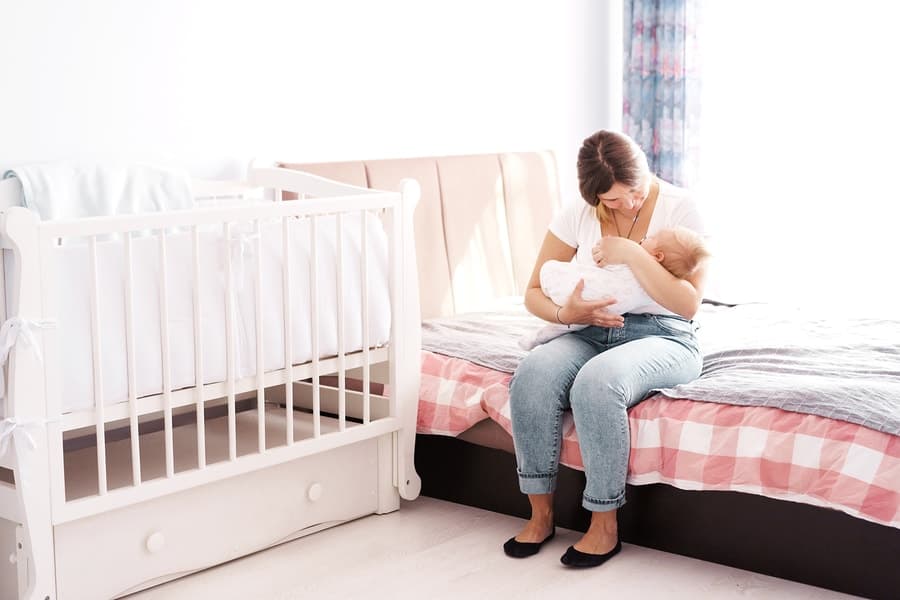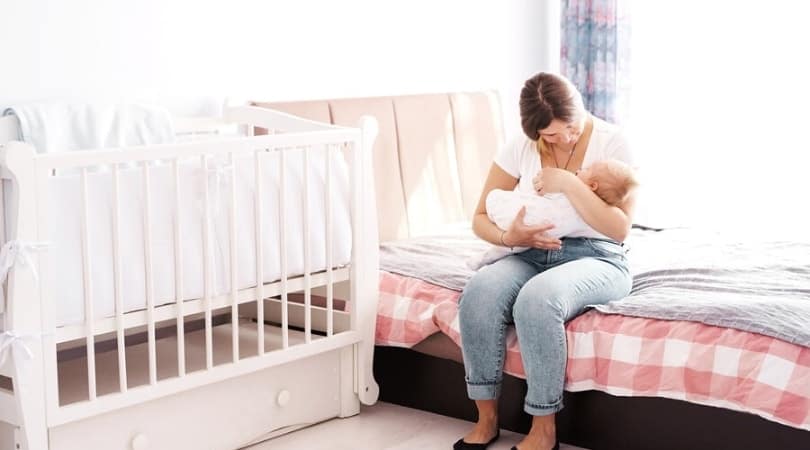This post contains affiliate links.
Whether your baby is sleeping in a bassinet or co-sleeping soon they will eventually need to move to into their own crib.
Gradually transitioning your baby to a crib is an important step that every parent should be prepared for.
Keeping your baby calm in a new crib might seem like a difficult task at first. Especially when they protest when you try…
But before going back to the bassinet (or cosleeping), let’s take a look at some tips you can try out to ease your baby into their own crib.
Have your baby spend time in the crib while they’re awake

Placing your baby in the crib during the day is a great way to get them familiar with their new sleeping environment.
Having them explore the four corners of the bed while awake will give them some time to get use to it and is a great way to establish a calm association with the crib.
Sleep with the crib sheets beforehand
Sleeping with the crib sheets might be that extra step that you can take when transitioning your baby into their new bed.
Even Though it might sound unnecessary to some, when rubbing off your scent onto the sheets the baby will feel your presence creating a calmer bedtime environment.
Keep crib in your room in the beginning

Making one change at a time is a way to ensure a smoother transition.
A great way to do this is to keep the crib in your room at first.
Then once the baby adjusts to sleeping in their crib you can move it back to its proper location.
Taking it all step by step will give them the needed warmth and security of a calm night’s sleep.
Start with naps in the crib
One of the most important steps, when trying to transition a baby into a crib is to start with naps.
Before committing to a long night’s sleep, short supervised naps during the day will help the baby become accustomed and feel more secure in the crib.
Use white noise

White noise is a very popular tool for baby sleep in general, and it absolutely works during difficult transitions to their crib.
Using high pitched noises grabs the attention of a crying baby, whereas low-pitched noises tend to calm and smooth.
Playing a low-pitched white noise when it is time for bed will help the baby calm down and fall asleep faster.
It may take a couple of tries even with white noise, but it is a wonderful thing to have in your baby care arsenal.
My son was obsessed with white noise and this is the number one thing that helped him transition.
✅ This specific white noise machine is the one I used for my son during his transition. He got a couple of years out of it too.
Set the mood
Setting the mood is a step that many parents tend to skip over, but it is just as important.
Creating a bedtime atmosphere that is both calming and relaxing will mentally prepare the baby for what is to come.
Running a hot bath, reading a story, or just dimming the lights an hour before placing them in their crib is a great way to ensure a relaxed and “ready for bed in their own crib” baby.
Swaddle
Comfortably wrapping your baby’s arm downwards in a cozy swaddle is one of the best things you can do to calm a sleeping baby.
By recreating womb-like security, the swaddle helps comfort your precious baby in their crib.

Stick with it
The transition process can be a difficult time for most parents, but it is a necessary step.
As your baby might take a while to get familiar with their new sleeping environment, remember that your goal is to teach your baby to fall asleep without any help.
Keeping a close eye on your baby’s reactions without helping every time is a step towards transitioning into an independent sleeping baby.
Pin for later:



If you found this article helpful share it with moms too 🙂
